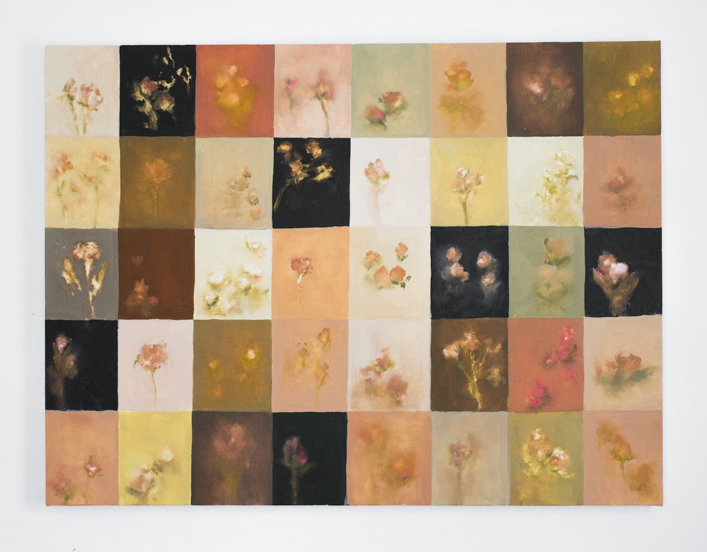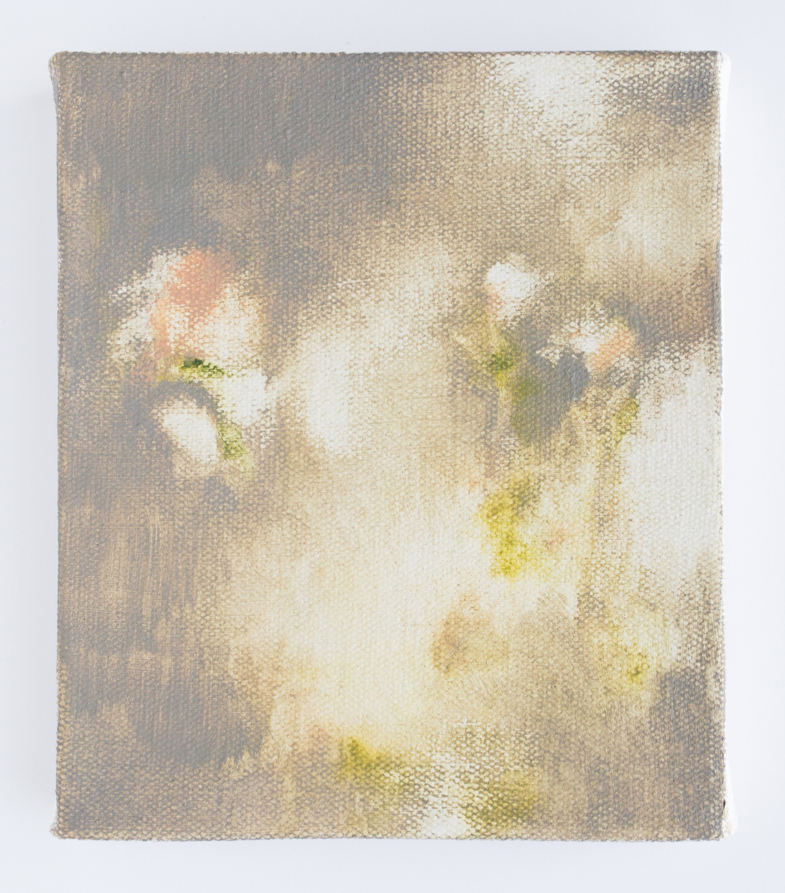
Conduit, 2021, Oil on canvas, 60 x 42 in.

Heirloom, 2021, Oil on canvas, 36 x 48 in.

Carnations, 2020, Oil on canvas, 6 x 5 in.


Amanda Nolan Booker
Tennessee
I am interested in the relationship between memory and change. Using nostalgia as a vantage point, I draw on personal experiences for my paintings. Memories undergo alterations in a series of imperceptible shifts over time, contributing to a new perspective. My work considers the uncertain areas of these shifts, the tension between stillness and progression. The imagery I use serves as a catalyst for the subject matter, which remains unseen: feelings of presence, absence, lingering, longing, a sense of ephemerality and residual impression.
- Excerpt from artist statement
Click works to the left (on desktop) or below (on mobile) to view full-screen.
amandanolanbooker.com︎ @amandanolanbooker︎
Inquire︎
Your paintings commonly reference memories and nostalgic associations. What is the significance of flowers in your paintings? Is there a symbolic value to the choice of specific flowers?
I began referencing flowers as an homage to my grandmother (they acted as portraits initially) and of my childhood in the country. They were very much about a specific person or a personal memory, so the type of flower I used and the way I painted (primarily from memory) reflected that. Now my work is not so tied to a place and time. It’s more about feeling. I still don't use reference photos or paint from life, but I wouldn't say I strictly paint from memory anymore. It's much more intuitive now. I don't begin a painting by thinking "I'm going to paint an iris.", but if, at the end, the flower I've painted resembles an iris, then any associations that occur to me are completely valid. And the same goes for the viewer. If they don't see an iris, but see a tulip instead, and that brings back memories of their own childhood or a memory of a loved one, then I've done what I set out to do.
You’re also interested in presence and absence, or the transitional space in between these two states. Do you find that the process of making the paintings reflects this?
Absolutely. My paintings are deliberately thin and kind of blurred. I don't like anything to be "just so" because nothing that I've experienced really ever is. It’s all in flux. I find myself reaching for a paper towel or an old rag just as much as my brushes, to blur the lines or bring something to the surface. It’s a lot of back and forth, a lot of push and pull until the image makes sense. Or doesn't. But some reconciliation that’s often hard to name has to take place.
What does ‘eternal’ mean to you?
When I used the word 'eternal' in my artist statement, I was referring to the life cycle of flowers, what the seasons bring year after year as we age. I think eternity is something outside of ourselves, but that exists alongside us. So while I use flowers to reference life, death, and everything in-between, the flowers still hold their own meaning and the painting can be interpretedin a lot of different ways.